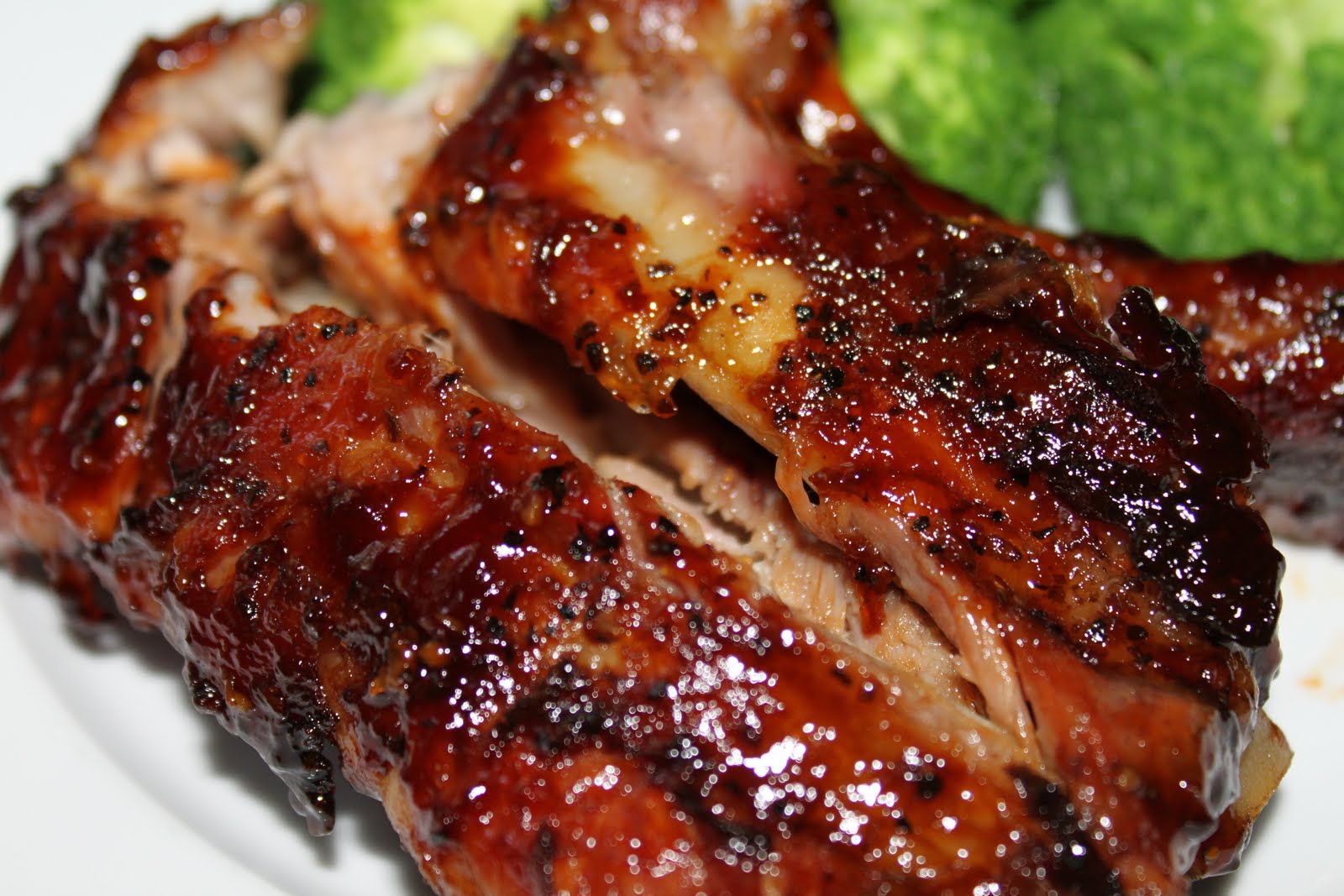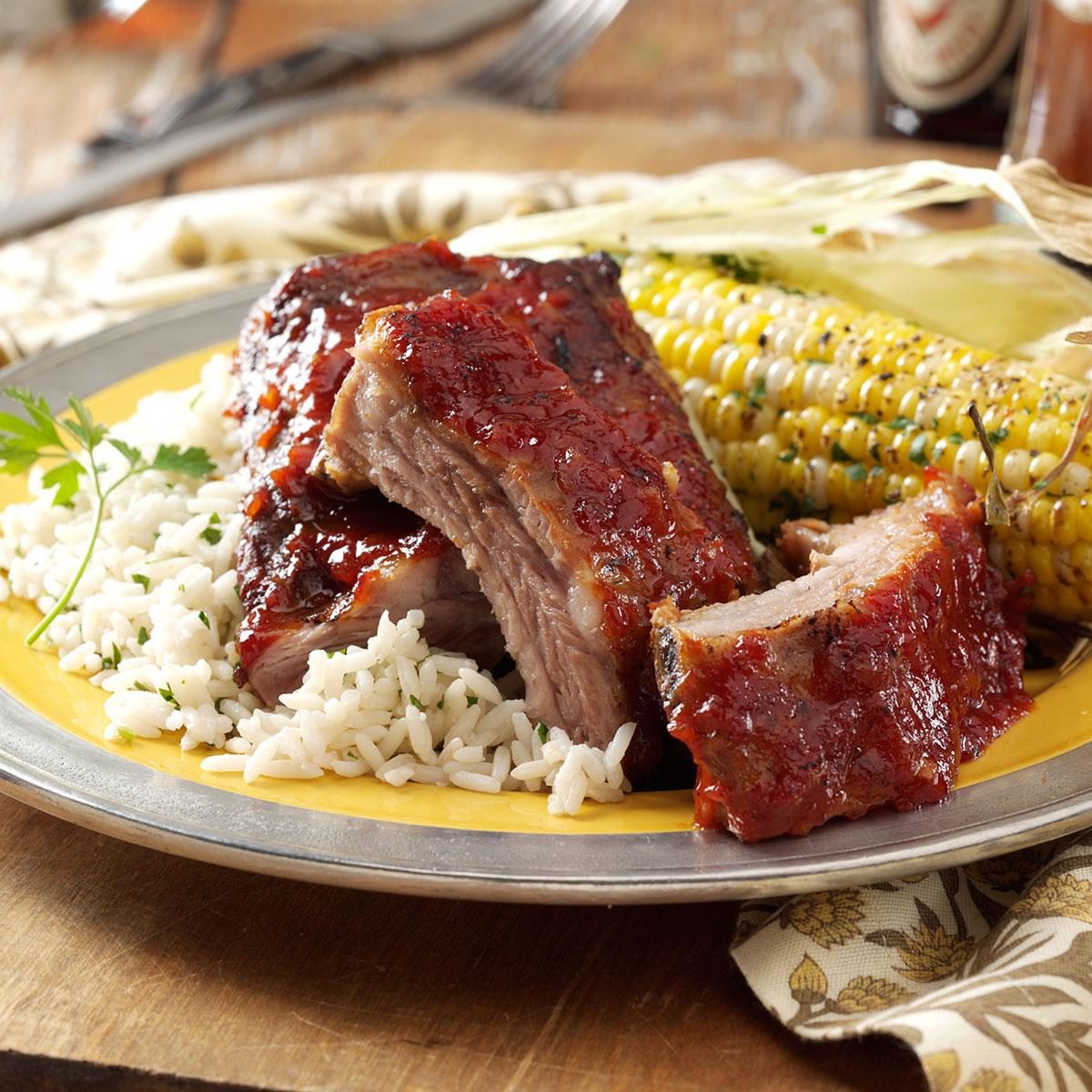Prepare to tantalize your taste buds with our comprehensive guide to baby back ribs! This succulent cut of meat offers an explosion of flavor and fall-off-the-bone tenderness that will leave you craving more. Whether you’re a seasoned pitmaster or a novice cook, this guide will equip you with everything you need to create mouthwatering baby back ribs that will impress your family and friends.
We’ll walk you through the entire process, from selecting the perfect rack of ribs to mastering various cooking techniques. Discover the secrets to creating delectable sauces and marinades that will enhance the ribs’ natural flavors. Along the way, we’ll provide helpful tips and answer frequently asked questions to ensure your baby back ribs turn out perfectly every time.
Ingredients
To craft a delectable batch of baby back ribs, you’ll need to gather an array of essential ingredients. Here’s a comprehensive list to ensure you have everything on hand before embarking on this culinary adventure.
The foundation of our ribs lies in the succulent rack of baby back ribs, weighing approximately 2 to 3 pounds. Choose fresh ribs with a vibrant red hue and a firm texture. To enhance their flavor, we’ll employ a tantalizing blend of spices, including 1 tablespoon of brown sugar, 1 tablespoon of paprika, 1 teaspoon of garlic powder, 1 teaspoon of onion powder, 1 teaspoon of dry mustard, 1 teaspoon of salt, and 1/2 teaspoon of black pepper.
These seasonings will work their magic to create a savory and aromatic crust.
Ribs
- 1 rack of baby back ribs (2-3 pounds), fresh
Dry Rub
- 1 tablespoon brown sugar
- 1 tablespoon paprika
- 1 teaspoon garlic powder
- 1 teaspoon onion powder
- 1 teaspoon dry mustard
- 1 teaspoon salt
- 1/2 teaspoon black pepper
Equipment

Preparing baby back ribs requires a few essential pieces of equipment to ensure a successful and efficient cooking experience.
From appliances and utensils to specialized tools, each component plays a specific role in preparing tender and flavorful ribs.
Appliances
- Oven: A preheated oven is crucial for roasting the ribs to perfection, allowing for even cooking and a crispy exterior.
- Microwave (optional): While not essential, a microwave can be used to speed up the cooking process by partially cooking the ribs before roasting.
Utensils
- Sharp knife: A sharp knife is necessary for trimming and cutting the ribs into desired portions.
- Tongs: Tongs are essential for handling the ribs during cooking, turning them easily and preventing burns.
- Measuring cups and spoons: Accurate measuring is crucial for creating the perfect marinade or sauce.
- Basting brush: A basting brush helps apply marinade or sauce evenly to the ribs during cooking.
Specialized Tools
- Meat thermometer: A meat thermometer is essential for ensuring the ribs are cooked to the desired internal temperature for safety and tenderness.
- Rib rack (optional): A rib rack elevates the ribs above the pan, allowing for even cooking and preventing them from sticking to the surface.
Preparation
Preparing baby back ribs involves a series of steps to enhance their flavor and tenderness. This includes trimming excess fat, seasoning, and marinating the ribs to ensure optimal results.
Trimming the Ribs
Begin by removing the membrane from the back of the ribs using a sharp knife. This membrane, known as the silver skin, can prevent the ribs from becoming fully tender during cooking. Trim away any excess fat, leaving a thin layer to provide flavor and moisture.
Seasoning the Ribs
Generously season the ribs with your preferred blend of spices. A classic combination includes salt, black pepper, garlic powder, and paprika. Use a combination of dry rubs and liquid marinades to penetrate the meat and create a flavorful crust.
Marinating the Ribs
Marinating the ribs enhances their flavor and moisture content. Prepare a marinade of your choice, combining liquids such as vinegar, beer, or barbecue sauce with herbs, spices, and seasonings. Place the ribs in a large bowl or container, pour the marinade over them, and refrigerate for at least 4 hours, or up to overnight.
Cooking Methods

The choice of cooking method can significantly impact the flavor and texture of baby back ribs. Here are the most popular methods, along with their advantages and disadvantages:
Grilling
- Advantages: Imparts a smoky flavor, easy to control heat, creates a crispy exterior.
- Disadvantages: Can dry out the ribs if not cooked carefully, requires constant attention.
Smoking
- Advantages: Enhances the ribs with a rich, smoky flavor, tenderizes the meat, creates a fall-off-the-bone texture.
- Disadvantages: Time-consuming, requires specialized equipment, can be challenging to control the temperature.
Roasting
- Advantages: Convenient, allows for precise temperature control, produces juicy and tender ribs.
- Disadvantages: Can lack the smoky flavor of grilling or smoking, may require longer cooking times.
Braising
- Advantages: Tenderizes the ribs through a slow cooking process, infuses the meat with flavor, creates a rich and flavorful sauce.
- Disadvantages: Requires a large amount of liquid, can be time-consuming, may not produce a crispy exterior.
Sauces and Marinades
Sauces and marinades play a crucial role in enhancing the flavor and texture of baby back ribs. They can transform a simple rack of ribs into a mouthwatering culinary masterpiece. Here are some delectable recipes for sauces and marinades that will complement your ribs perfectly:
Classic Barbecue Sauce
- Ingredients: 1 cup ketchup, 1/2 cup apple cider vinegar, 1/4 cup brown sugar, 1/4 cup honey, 1/4 cup Dijon mustard, 1 tablespoon Worcestershire sauce, 1 teaspoon smoked paprika, salt and pepper to taste
- Preparation: Combine all ingredients in a saucepan and bring to a simmer over medium heat. Reduce heat and let simmer for 15 minutes, or until thickened.
- Application: Brush the sauce generously over the ribs during the last 30 minutes of cooking.
Serving Suggestions
Elevate your baby back rib feast with a symphony of side dishes that complement their smoky, succulent flavors. A balanced meal not only satisfies your palate but also ensures a nutritional symphony.
Consider a refreshing coleslaw to cut through the richness of the ribs. Its crisp texture and tangy dressing will provide a lively contrast. Alternatively, baked beans, brimming with sweet and savory notes, will add a comforting touch to the plate.
Presentation Perfection
Presentation plays a pivotal role in creating an unforgettable dining experience. Arrange your ribs in a visually appealing manner, fanning them out on a platter or stacking them vertically in a rustic-chic style. Garnish with fresh herbs like parsley or cilantro for a touch of vibrant greenery.
Variations
Baby back ribs are a versatile dish that can be customized to suit any taste or dietary restriction. Here are some variations on the classic recipe:
Flavors and Ingredients
Experiment with different flavors by adding herbs and spices to the rub or marinade. Popular choices include paprika, cumin, chili powder, oregano, and garlic powder. You can also add sweetness with honey or brown sugar, or heat with cayenne pepper or Sriracha sauce.
Cooking Techniques
Baby back ribs can be cooked using a variety of methods, including grilling, roasting, smoking, and even air frying. Each method imparts a unique flavor and texture to the ribs. Grilling gives them a smoky flavor, while roasting makes them more tender.
Smoking infuses them with a deep, rich flavor, and air frying makes them crispy on the outside and juicy on the inside.
Dietary Restrictions
To adapt the recipe for dietary restrictions, you can use gluten-free ingredients in the rub or marinade. You can also substitute low-sodium soy sauce or tamari for regular soy sauce, and use sugar-free barbecue sauce for a low-sugar option. For a vegan version, use a plant-based barbecue sauce and replace the ribs with seitan or tofu.
Storage and Reheating
Properly storing and reheating baby back ribs is crucial to maintain their quality and prevent spoilage.
Storage
Store cooked baby back ribs in an airtight container in the refrigerator for up to 3-4 days. For longer storage, freeze the ribs in freezer-safe bags or containers for up to 3 months.
Reheating
Reheat baby back ribs without compromising their flavor or texture by using the following methods:
Oven
Preheat oven to 350°F (175°C). Wrap the ribs in foil and heat for 20-30 minutes, or until warmed through.
Microwave
Place the ribs on a microwave-safe plate and cover with a damp paper towel. Heat in 30-second intervals, checking frequently to prevent overcooking.
Grill
Preheat the grill to medium heat. Grill the ribs over indirect heat for 10-15 minutes per side, or until heated through.
Closure
With this comprehensive guide, you’ll be able to prepare baby back ribs that are not only tender and flavorful but also visually appealing. Whether you’re hosting a backyard barbecue or a special dinner party, these ribs will undoubtedly steal the show.
So, gather your ingredients, fire up your grill or oven, and embark on a culinary journey that will leave your taste buds satisfied and your guests clamoring for more.
Questions and Answers
What is the best way to trim baby back ribs?
To trim baby back ribs, remove the thin membrane on the back of the ribs using a sharp knife. This will help the ribs cook more evenly and absorb the marinade or sauce better.
How long should I marinate baby back ribs?
For optimal flavor, marinate baby back ribs for at least 4 hours, or up to overnight. This allows the marinade to penetrate the meat and enhance its flavor.
What is the ideal cooking temperature for baby back ribs?
For tender and juicy baby back ribs, cook them at a low temperature, around 225-250°F (107-121°C). This slow and steady cooking process allows the collagen in the ribs to break down, resulting in fall-off-the-bone tenderness.
Can I use any type of sauce on baby back ribs?
Yes, you can use a variety of sauces on baby back ribs. Popular options include barbecue sauce, honey mustard, or a simple glaze made with brown sugar and spices.
How do I store leftover baby back ribs?
Store leftover baby back ribs in an airtight container in the refrigerator for up to 3 days. To reheat, wrap the ribs in foil and warm them in a preheated oven at 350°F (177°C) until heated through.
